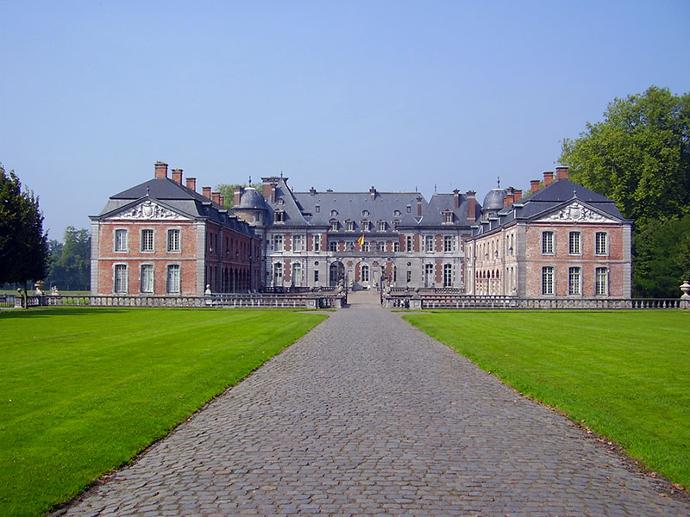BELOEIL CASTLE
Eight centuries ago, surrounded by its moats, Beloeil Castle was initially a medieval fortress. Over the centuries, it transformed into a pleasure castle and has been owned by the Princes of Ligne since the 14th century.
PRESENTATION
Acquired by the Ligne family through inheritance from the Condé in the 14th century, Beloeil Castle has undergone several architectural transformations, evolving from a defensive stronghold into a more comfortable aristocratic residence. While some foundations and towers still bear witness to its military past, the estate has been designed to reflect the elegance and refinement of its occupants.
The interior houses a remarkable collection of artworks from the 17th to the 19th century, including furniture crafted by the greatest French cabinetmakers of the 17th and 18th centuries, and an impressive library containing 20,000 volumes.
The estate is also renowned for its French-style garden, designed in 1664 and meticulously maintained according to its original layout. This 25-hectare park, harmoniously blending water and greenery, shade and light, is recognized as an exceptional heritage site in Wallonia.
LOUVIGNIES CASTLE
Nestled in the rolling countryside of Hainaut, Louvignies Castle dates back to a medieval tower built in 1389. Over the centuries, it evolved and expanded before being acquired in 1716 by Don Rodrigues de Perralta, an ancestor of the de Moreau de Villegas de St-Pierre family, who still owns it today.
PRESENTATION
Around 1870, Louvignies castle underwent a major transformation under Count Léon de Villegas de St-Pierre and his wife, Countess Ferdinande de Maillen.
A fine example of 19th-century eclecticism, the castle has preserved its original furnishings. Visitors can step back in time and experience both aristocratic life—through monogrammed tableware, crystal glassware, ball gowns, and family albums—and the daily routines of the household staff. This Belgian château offers an atmosphere reminiscent of Downton Abbey.
The landscaped park, covering 14 hectares, was designed by Louis Fuchs in 1870 and is listed among ‘Wallonia’s remarkable gardens’. It is home to several remarkable trees, including a Virginia tulip tree dating from 1880.
The grounds also features stables, a kennel, a vaulted icehouse, and an orangery set within a historic walled vegetable garden.



